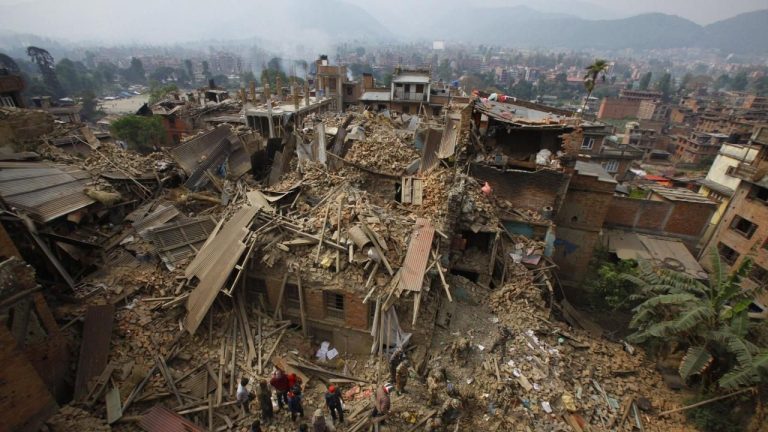Nepal held a national memorial on Friday to mark 10 years since the deadly earthquake of 2015. The event took place in the capital, Kathmandu, and brought together national leaders, foreign diplomats, and survivors to remember those who lost their lives and to reflect on the country’s long recovery.
At 11:56 a.m., the exact time the 7.8 magnitude earthquake struck on April 25, 2015, Prime Minister Khadga Prasad Oli, along with ministers and international guests, stood for a minute of silence at the site of the Dharahara Tower. The tower collapsed during the quake, killing 180 people.
Remembering the Tragedy
The 2015 earthquake was one of the worst disasters in Nepal’s history. It killed nearly 9,000 people, injured more than 22,000, and damaged close to 1 million buildings across the country.
Prime Minister Oli said the country suffered great loss, but managed to rebuild and recover through strength and unity. The earthquake left many without homes, schools, or medical centers. Historic sites and cultural landmarks were also destroyed.
Despite these hardships, Nepal has made major progress in the years since the quake.
Global Support After the Earthquake
Nepal received support from around the world after the disaster. Many countries sent rescue teams, medical aid, and supplies. Among them were India, China, the United States, Japan, and many European nations. International agencies like the United Nations also stepped in to help.
During the ceremony, diplomats and officials from these countries joined Nepal’s leaders to light candles in memory of those who died. Prime Minister Oli thanked partner nations and organizations for their quick and lasting support.
Progress in Rebuilding
Anil Pokhrel, the former chief of Nepal’s disaster management authority, reported that about 80 percent of damaged structures have been rebuilt. He said nearly all public buildings, including schools and hospitals, now meet updated safety standards.
In rural areas, 95 percent of houses that were destroyed have been reconstructed. In cities, progress has been slower due to problems such as land ownership disputes and planning issues.
To help families rebuild, the government provided around 3,000 US dollars per household. District offices were set up with engineers and experts to guide people through the rebuilding process.
A Model for Recovery
Nepal’s recovery has been seen as a success story in many parts of the world. The scale of the disaster was large, but the response and rebuilding efforts were organized and effective.
Many buildings are now built with earthquake-resistant designs. New construction laws and safety rules have been put in place. Schools and government offices are regularly checked for safety. Communities also take part in safety drills and education programs.
Anil Pokhrel said that Nepal’s recovery is considered an example of how countries can come back stronger after a major disaster.
Preparing for Future Disasters
Nepal is located on a major fault line, which means the risk of earthquakes will always remain. Government officials used the anniversary to stress the need for better preparedness and planning.
They are working on early warning systems and improved response plans. Training programs for rescue workers and local officials are also expanding.
The goal is not only to rebuild but to make sure that the country is ready for any future events. Lessons from 2015 are being used to build safer homes, stronger buildings, and a more aware population.
A Day to Reflect and Recommit
Many people across Nepal marked the anniversary in quiet and personal ways. In cities and villages, families lit candles, prayed, and shared memories of loved ones who were lost.
Sita Tamang, who lost two family members in the quake, said she was proud that her family had rebuilt their home and life. Like many others, she hopes that Nepal continues to prepare for the future while honoring the past.


